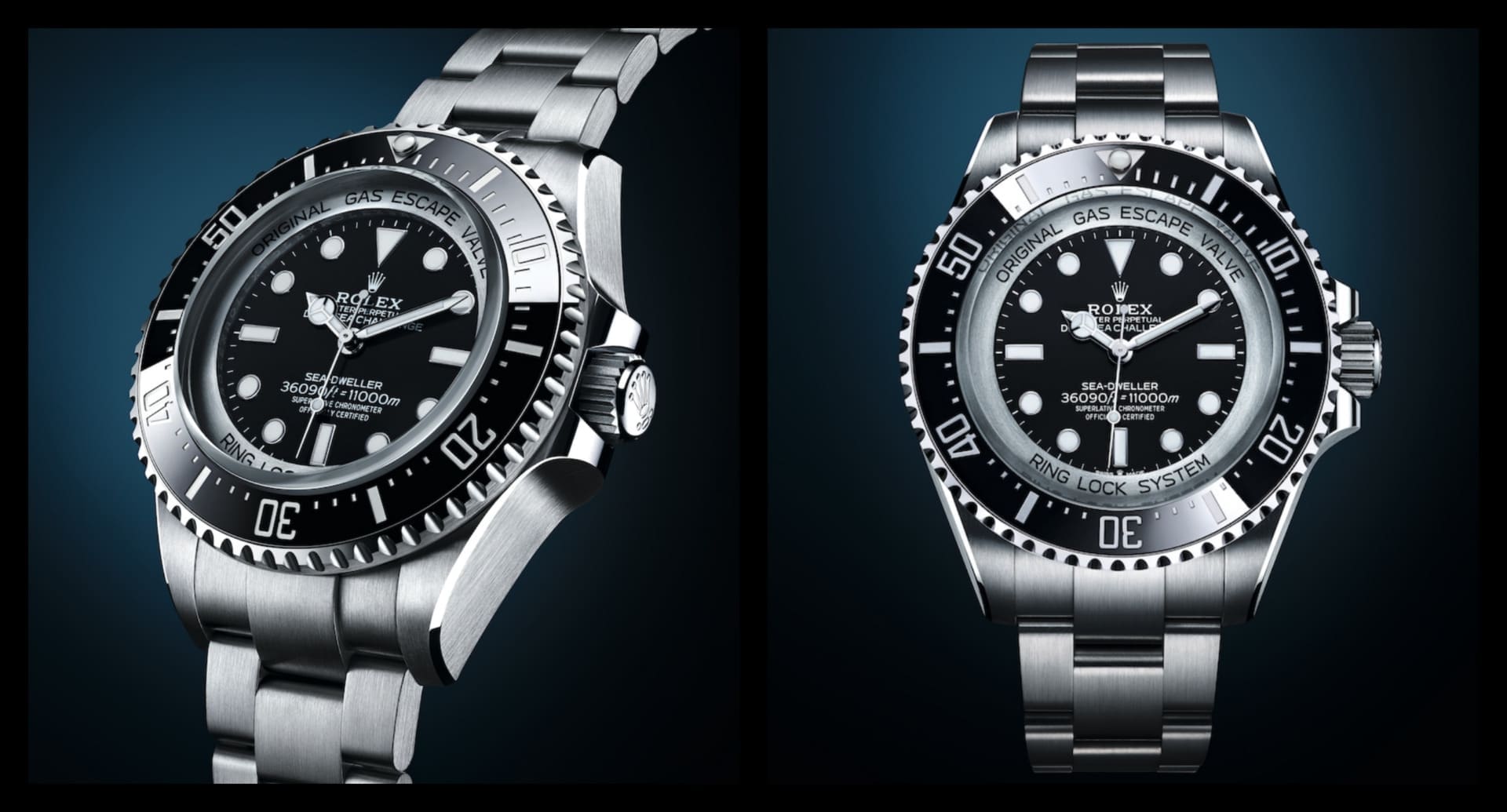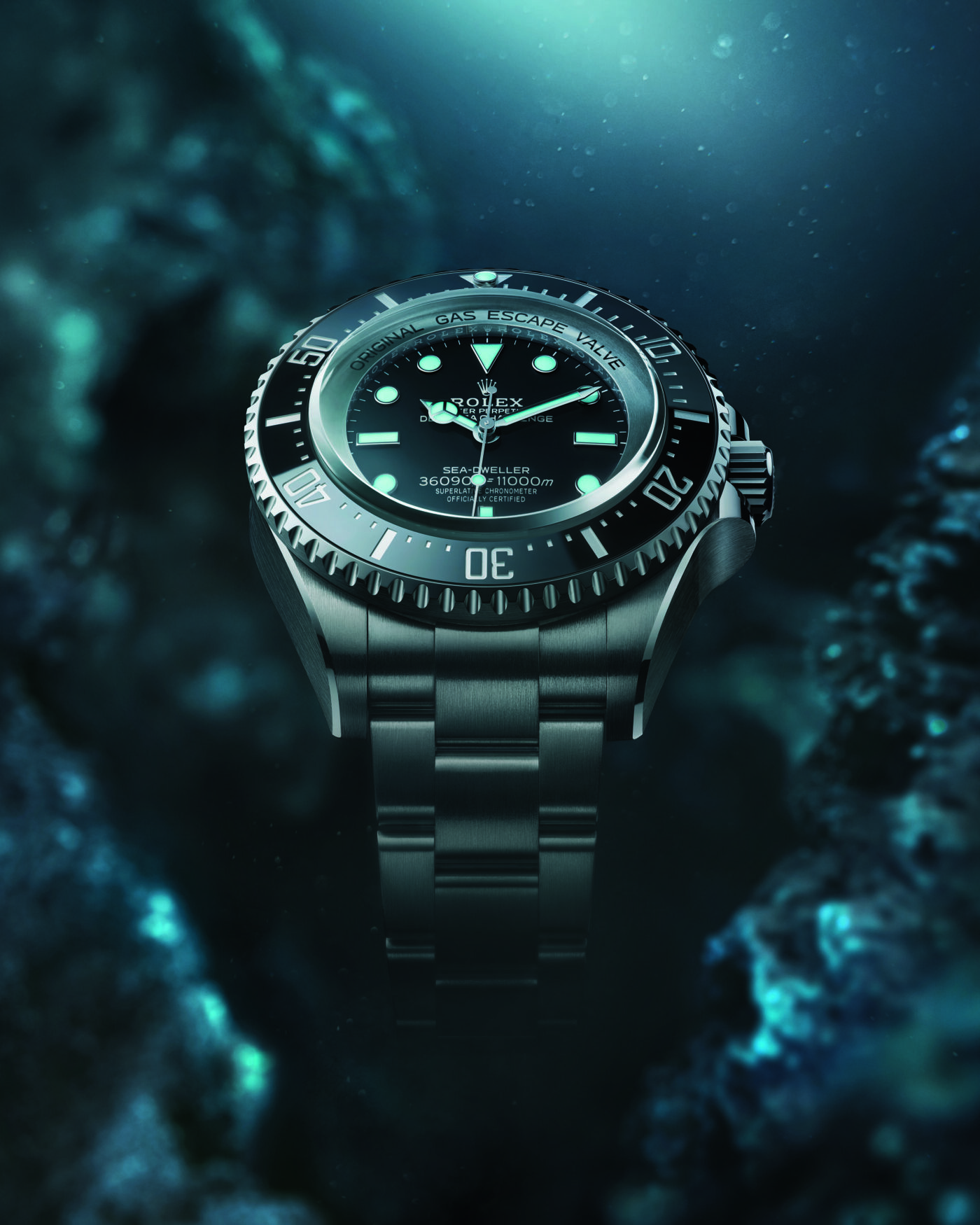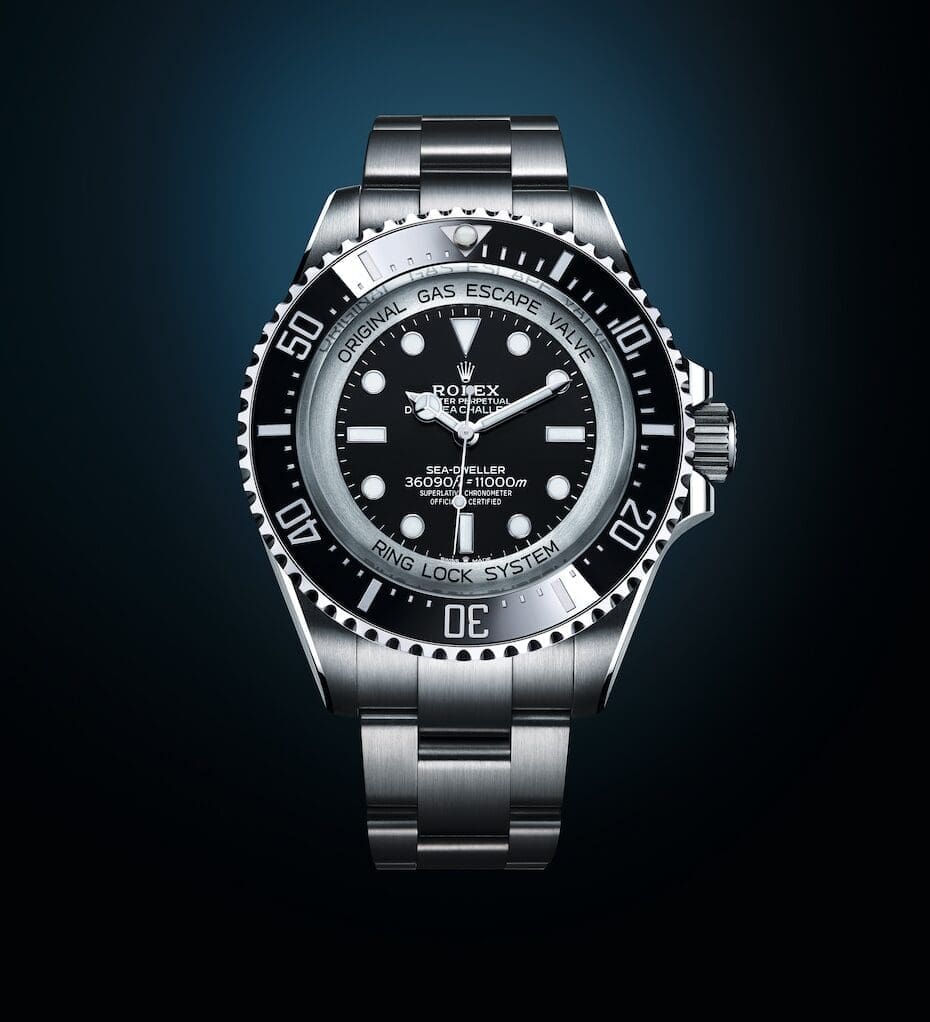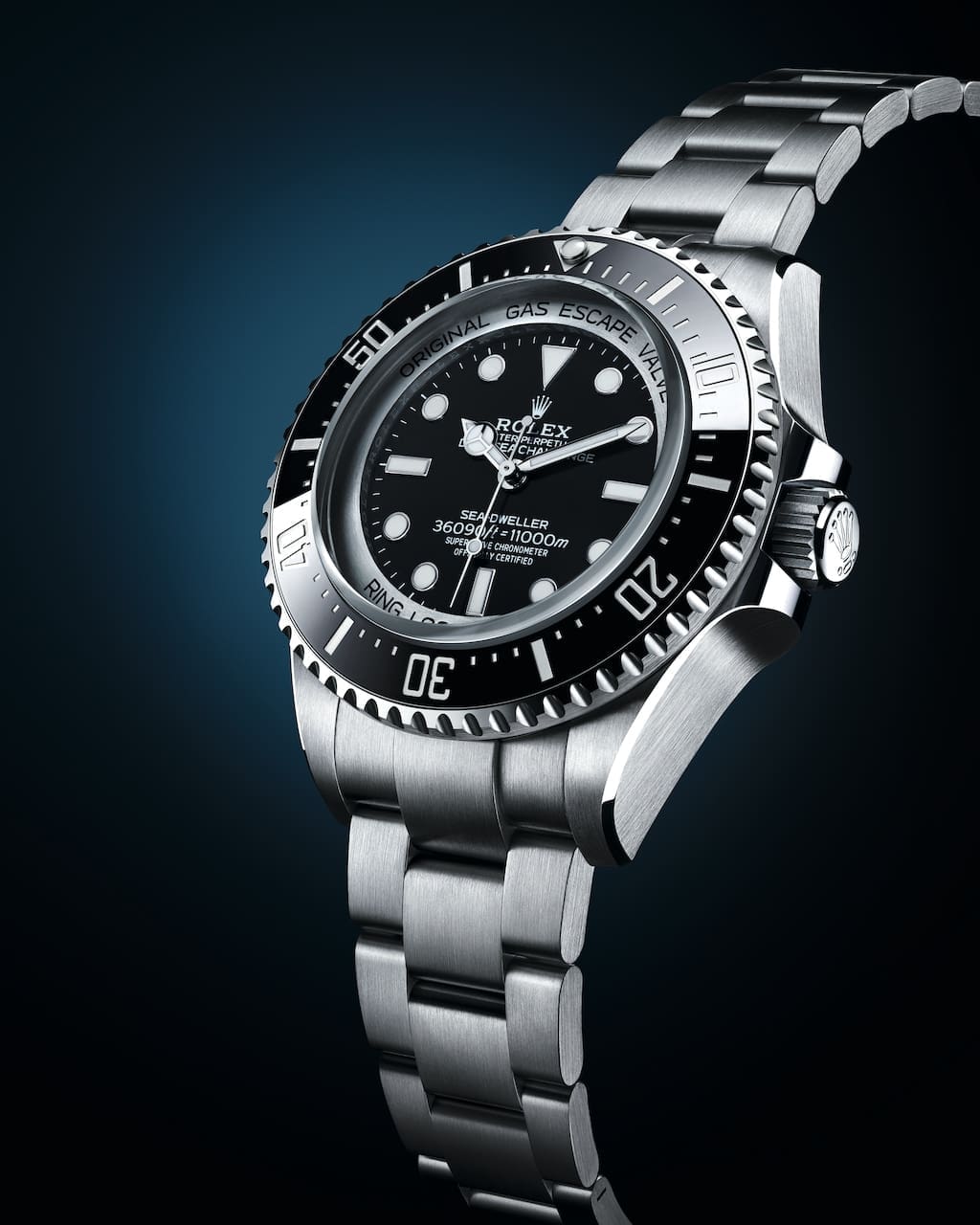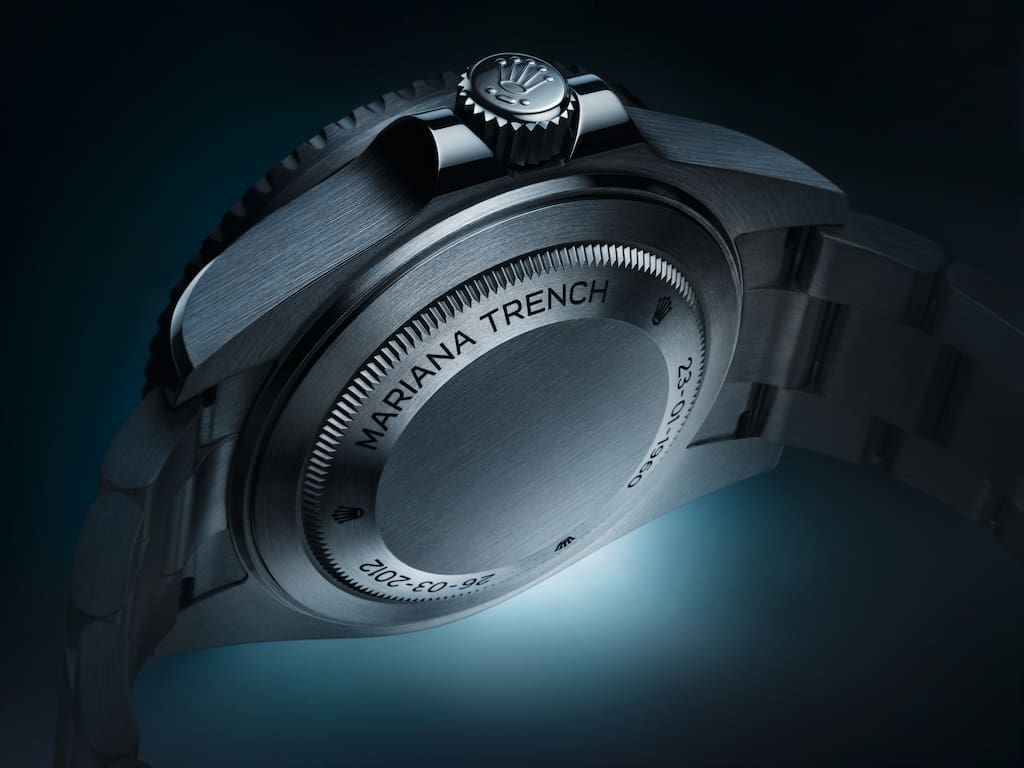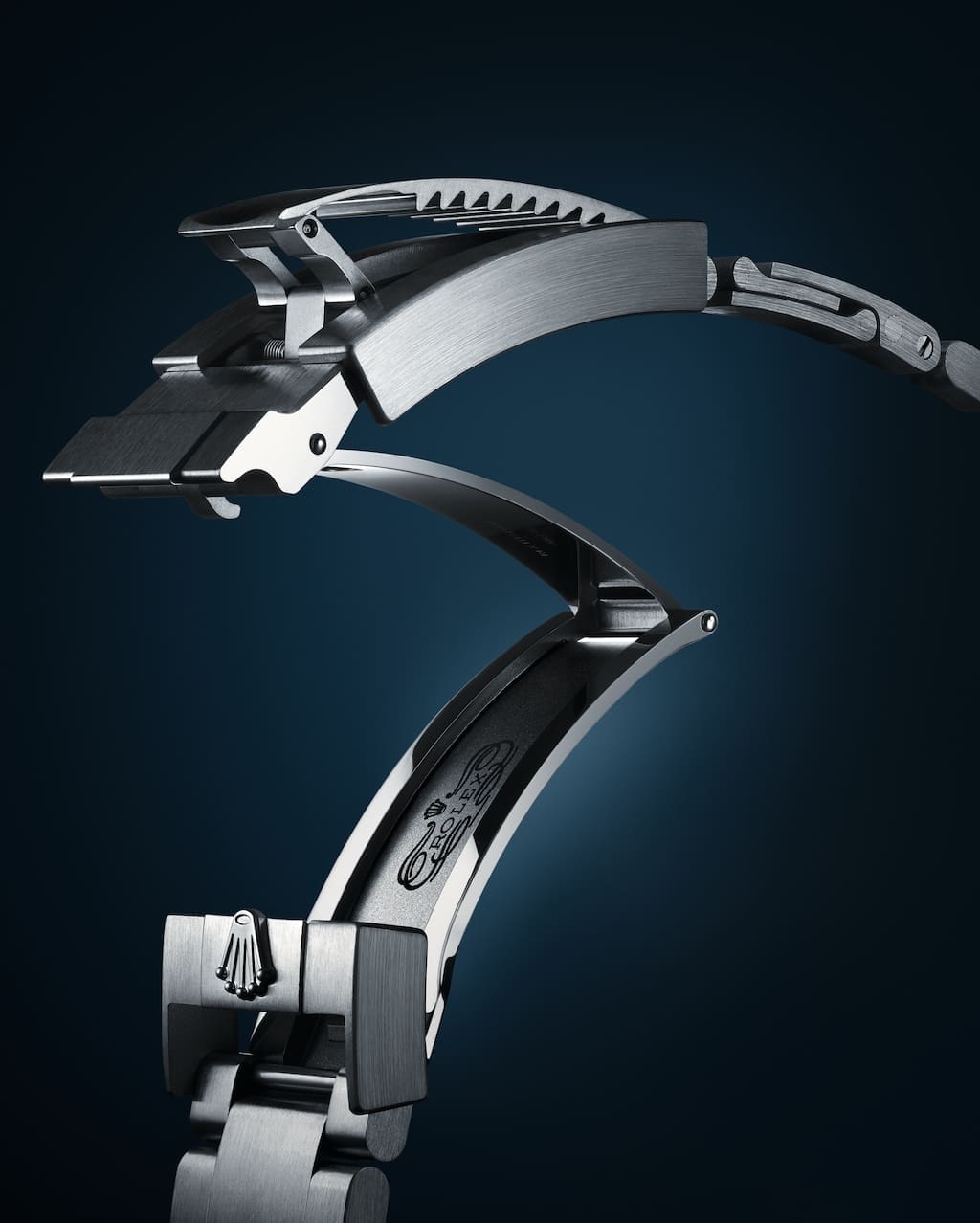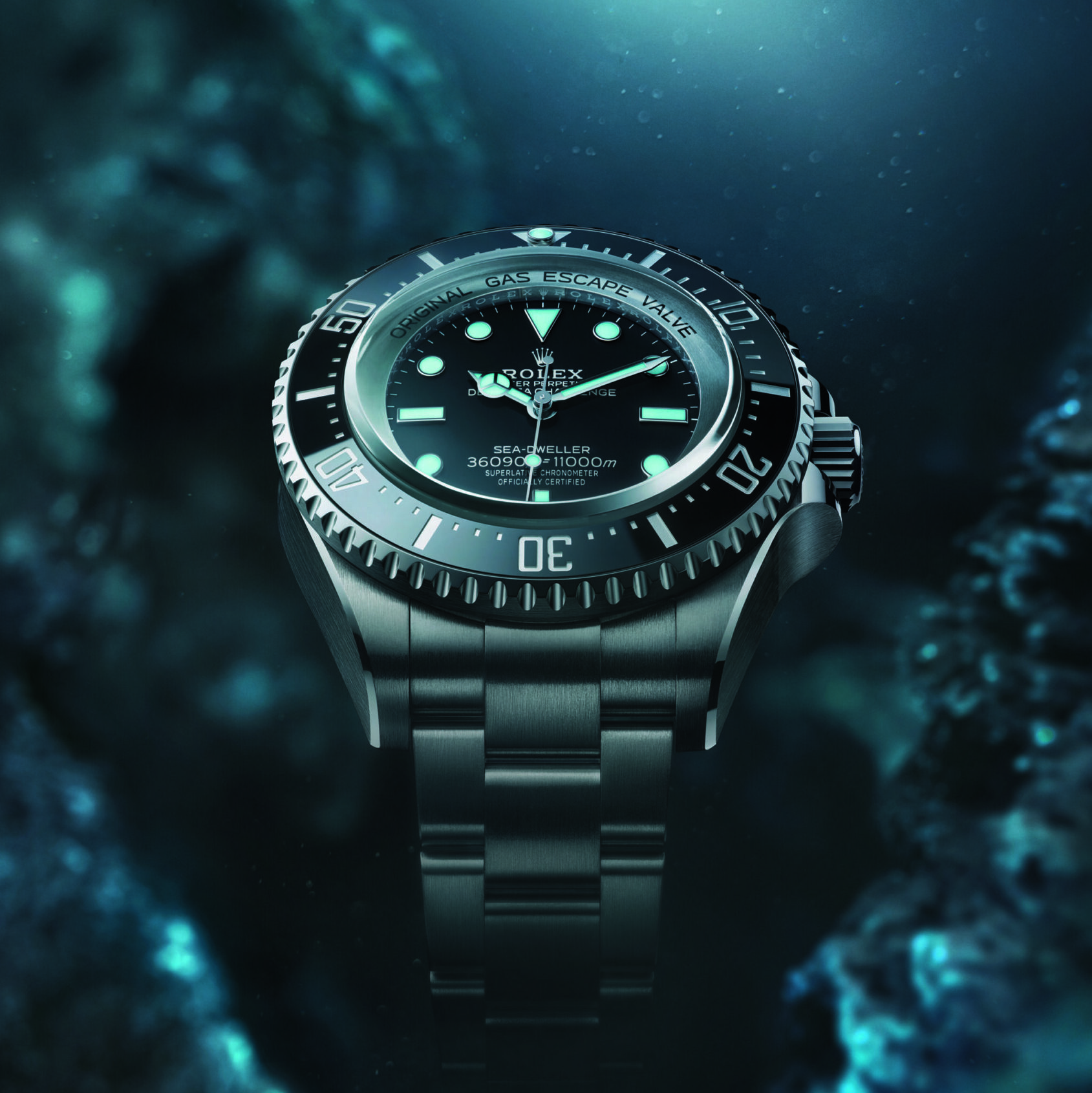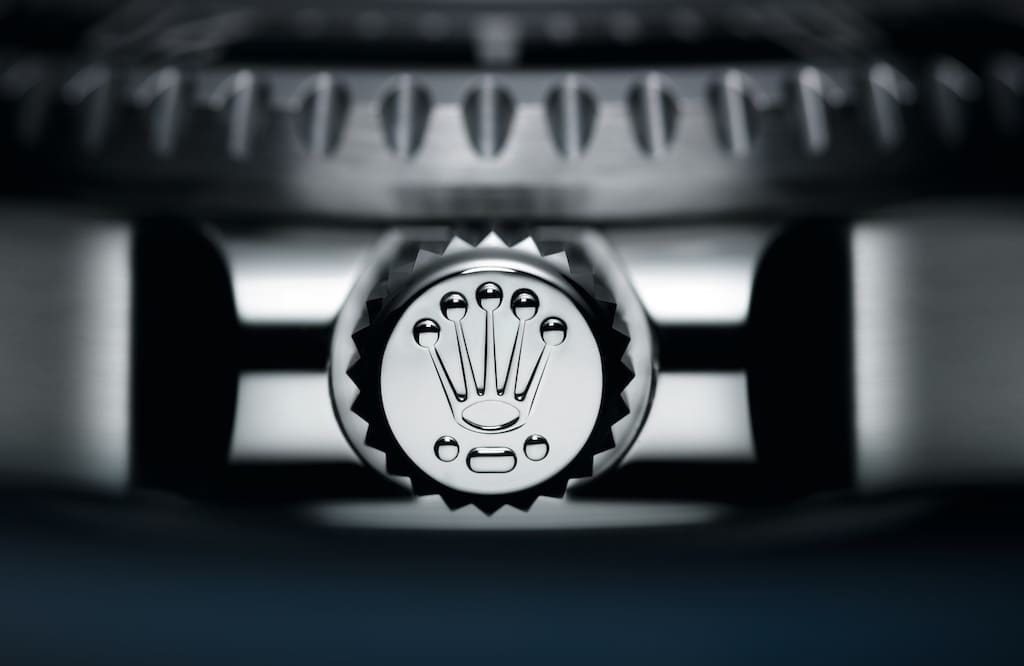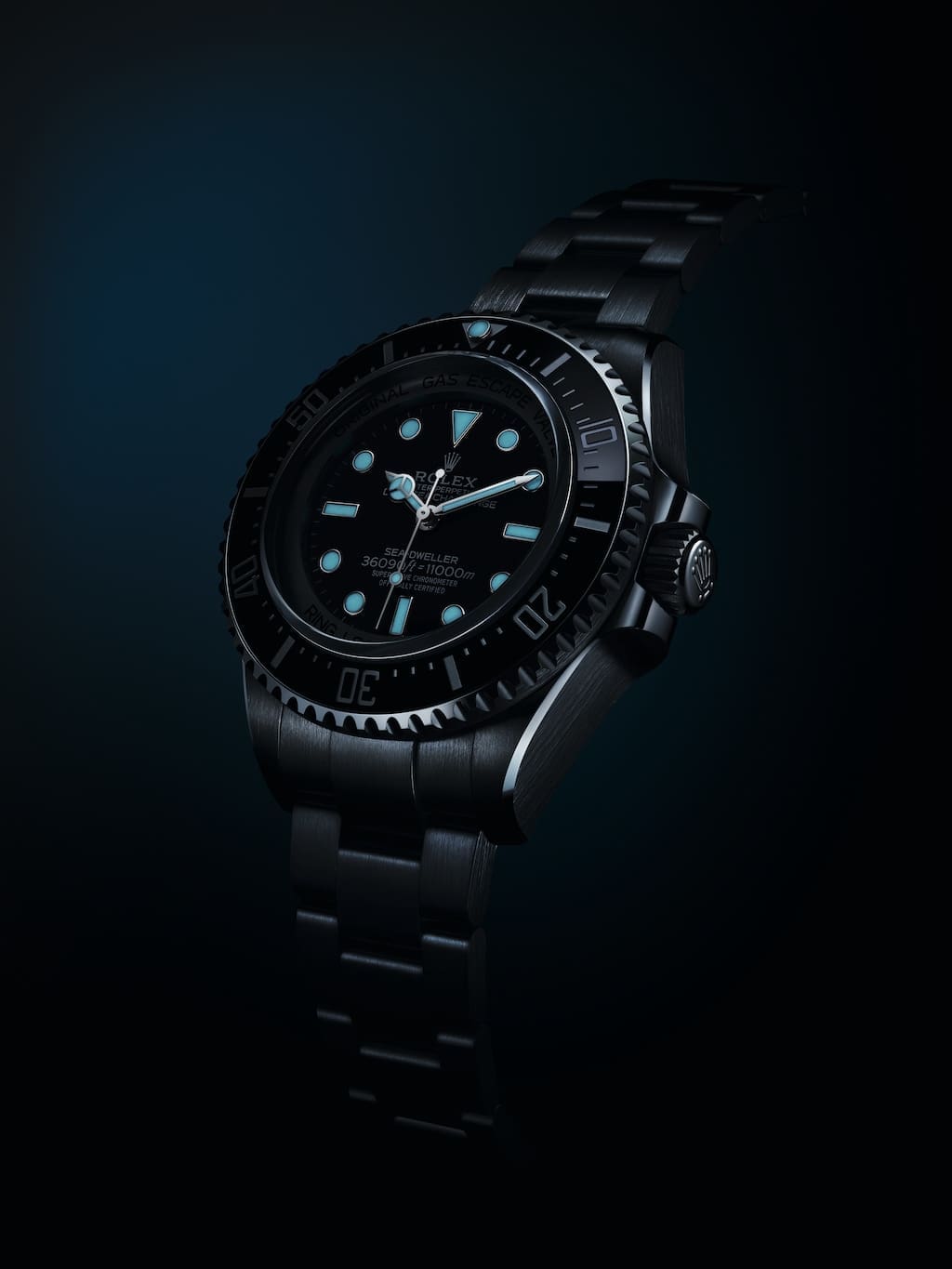OK, cool… But who is the new 50mm titanium Rolex Deepsea Challenge really for?
Zach BlassToday, inspired by the experimental watch that accompanied filmmaker James Cameron on his historic 10,908-metre (35,787-foot) descent into the Mariana Trench on March 26, 2012, Rolex has revealed their first ever all-titanium production watch: the Rolex Oyster Perpetual Deepsea Challenge in RLX Titanium with a depth rating of 11,000 metres. As cool as it is to see the debut of a first-ever in Rolex production, considering the size and price of the watch I have to wonder: who is the new 50mm RLX Titanium Rolex Deepsea Challenge really for?
Understanding the watch
The new RLX Titanium material is a grade 5 titanium alloy, that also includes aluminium and vanadium, and weighs approximately 40% less than stainless steel. Considering the watch clocks in at 50mm in diameter, 23mm in thickness, and a holy moly 61mm across the wrist lug-to-lug, to make such a watch in anything but lightweight titanium would have led to a serious paperweight on the wrist. As you can see from its largely brushed finish, the Deepsea Challenge uses a largely utility-inspired aesthetic. Even the Oyster bracelet is all-brushed. The only clear accents of mirror polish can be found on the bezel, crown, and a through-line of mirror polish from the lug bevels to the crown guards. The dial is also executed in a matte black, which continues the more muted appearance seen by the largely brushed surfaces of the case. This makes me wonder whether or not a matte ceramic Cerachrom bezel would have been more suitable for the Deepsea Challenge, rather than the standard glossy black Cerachrom bezel with platinum inlays for the timing scale.
To receive its 11,000 metres of water-resistance, which is secured by a Triplock screw-down crown, the Deepsea Challenge was actually tested 25% beyond its depth rating with the help of COMEX at 13,750 metres. The Rolex patent that largely helps makes this happen is their Ringlock system. Simply put, Ringlock helps the watch remain thinner (it could have been a lot worse than 23mm thick) with a stainless-steel ring that also helps mitigate the stresses found at deeper depths and pressures. The chamfered sapphire crystal, which alone is 9.5mm thick, is then mounted to both the inner stainless-steel case ring and titanium caseback. This Ringlock system, along with the helium escape valve on the 9′ side of the case, ultimately leads to a watch that can withstand such depths underwater.
Beneath a solid commemoratively etched RLX Titanium caseback ticks the familiar in-house calibre 3230, the very same movement found inside of the Submariner and other dateless Oyster Perpetual models. It offers the Superlative Chronometer precision of +2/-2 seconds per day, approximately 70 hours of power reserve, and a paramagnetic blue Parachrom hairspring.
Of course, on Rolex ultimate dive watch you have their ultimate diver’s clasp on the bracelet. Forged in case-matching RLX Titanium, the Rolex Deepsea Challenge bracelet utilises a heavily brushed Oyster bracelet with folding Oysterlock safety clasp and Rolex Glidelock and Fliplock extension systems that will ensure it can be perfectly sized with or without a dive suit on. And, as you can see in the picture above, the links are secured by screws.
Who is the new Rolex Deepsea Challenge for?
Rolex is known for incremental change and updates, so it makes sense that the first all-titanium production watch they have made is within a collection that has used titanium components before. Rolex also strategically uses materials to ensure the utmost performance, so it also makes sense that a watch of this size was made in RLX Titanium – were it in steel its weight might just bring you straight down to the 11,000m depth it is rated for.
Jokes aside, such a large watch, and a rather expensive one at $26,000 USD begs the question who is this watch really for? It is definitely not affordable, and it is certainly not of a size that would flatter most wrists. So, if we know this watch is not for the average luxury watch consumer, the fashion-forward or the average-wristed, then who is this watch really for besides James Cameron?
Rolex collectors, regardless of whether or not it suits their wrist or lifestyle, will likely race to purchase one for its historic status as Rolex’s first all-titanium production watch. It marks a material milestone for the storied brand, as well as a personal-best record depth rating for The Crown. From a celebrity perspective, you would have to be a member of The Expendables or Fast & Furious casts for this watch to look at home on your wrist. Aside from The Rock and Sylvester Stallone, it will be too much watch for most to wear. Lastly, of course, flippers will want to get their hands on the new Rolex Deepsea Challenge as well, irrespective of the size of their wrists.
The exciting titanium tells for the future
Look, I have gone on the record about whether or not Rolex making titanium watches would excite me personally. While I do not see myself wanting to purchase a titanium Rolex watch due to my association of luxurious heft with the brand, from an evolution and novelty standpoint I definitely hope Rolex does venture further in titanium timepieces. The good news is Rolex would not invest so heavily in developing the RLX Titanium alloy, and the tooling to machine it, for a one and done scenario. And don’t forget, we had a first-glimpse of an all-titanium Rolex prototype Yachtmaster on the wrist of Sir Ben Ainslie. We have to assume more RLX Titanium watches are on the horizon, and perhaps Watches & Wonders in 2023 will see another collection make its RLX Titanium debut.
If and when Rolex does introduce new RLX Titanium timepieces, beyond the new Rolex Deepsea Challenge, there are some interesting design elements that suggest how Rolex might proceed. Firstly, the fact Rolex has created a dedicated dot-dash-dot crown stamping to signal Triplock in titanium is exciting and may suggest Rolex will continue to create titanium timepieces. Secondly, were Rolex to make more watches in RLX Titanium, the finish of the Deepsea Challenge suggests these titanium designs may largely carry brushed finishes – making them less flashy than their steel and precious metal counterparts. Lastly, the lug profile seen on the Deepsea Challenge is very vintage-inspired. The lugs are definitely thinner in width, yet feature a rather thick mirror-polished bevel – evocative of vintage case-finishing style and watches like the Tudor Black Bay that emulate vintage style finishing in the modern era.
So, my overall verdict on the Rolex Deepsea Challenge: is OK, cool. But, considering the watch really is not for most people and wrists, the real excitement is the doors it opens. The fact it likely ushers in an a new RLX Titanium era of Rolex watchmaking across their collections. C’mon Rolex, bring on the RLX Titanium Yachtmaster on an Oysterflex bracelet!
Rolex Deepsea Challenge pricing and availability:
The Rolex Deepsea Challenge is available now for inquiries. Price: $26,000 USD (excl. tax)
| Brand | Rolex |
| Model | Oyster Perpetual Deepsea Challenge |
| Case Dimensions | 50mm x 23mm x 61mm |
| Case Material | RLX Titanium (grade 5 titanium alloy), black Cerachrom bezel with platinum scale inlays |
| Water Resistance | 11,000m (screw-down crown) |
| Dial | Black |
| Crystal | Sapphire |
| Strap | RLX Titanium Glidelock and fliplock extension Oyster bracelet |
| Movement | In-house automatic 3230 calibre |
| Power Reserve | 70 hours |
| Functions | Hours, minutes, seconds |
| Availability | Now |
| Price | $26,000 USD (excl. tax) |




